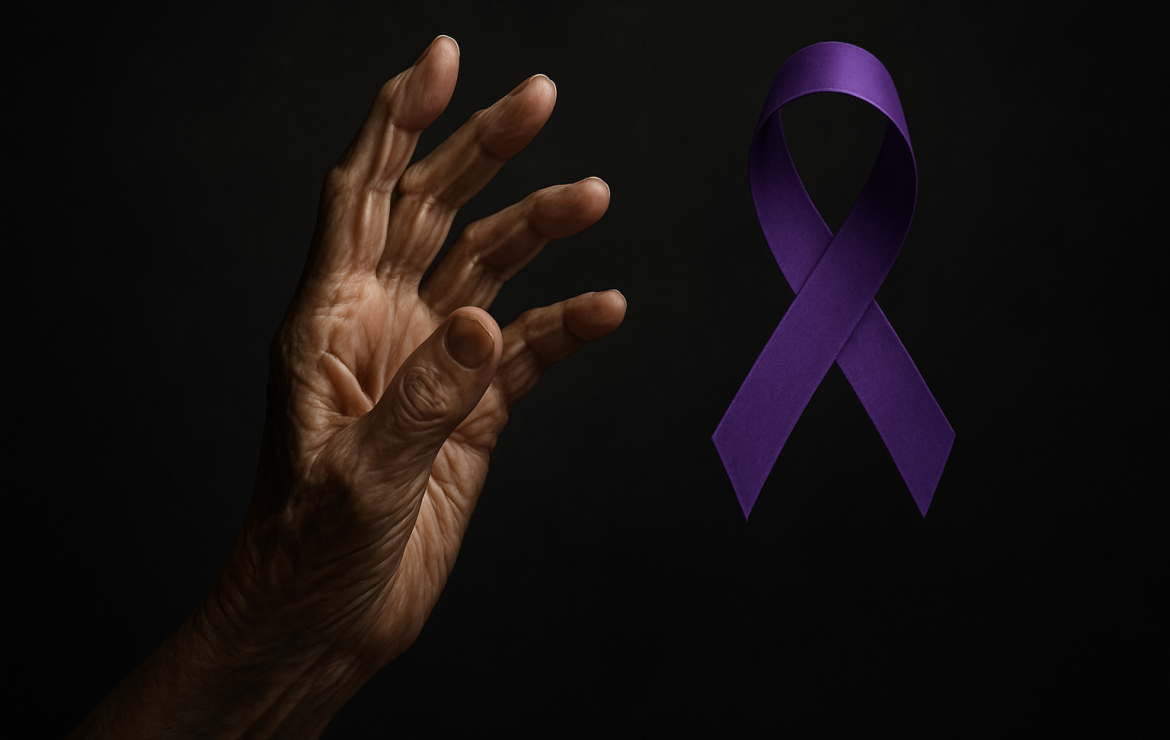World Elder Abuse Day 2024: Protecting Our Seniors’ Rights

World Elder Abuse Awareness Day: A Global Call to Action
Every 5 seconds, an older person suffers abuse somewhere in the world. This stark reality underscores the critical importance of World Elder Abuse Awareness Day (WEAAD), observed annually on June 15th. WEAAD serves as a global platform to shed light on the often-hidden issue of elder abuse and mobilize communities worldwide to combat this growing problem. As our global population ages, the significance of WEAAD in fostering awareness, promoting prevention, and encouraging intervention cannot be overstated.
Understanding Elder Abuse: A Multifaceted Problem
Elder abuse is a complex issue that manifests in various forms, each causing significant harm to older adults’ well-being and dignity. Understanding these different types of abuse is crucial for effective prevention and intervention:
- Physical Abuse: This involves inflicting physical pain or injury upon an older person. It can range from hitting and pushing to inappropriate use of restraints or medication.
- Emotional Abuse: Often harder to detect, emotional abuse includes verbal assaults, threats, intimidation, and humiliation. It can lead to severe psychological distress and isolation.
- Financial Abuse: This form of abuse involves the unauthorized or improper use of an older person’s resources. It can include theft, fraud, or coercion in financial decisions.
- Sexual Abuse: Any non-consensual sexual contact with an older person falls under this category. It’s often underreported due to shame and stigma.
- Neglect: This occurs when caregivers fail to fulfill their responsibilities, leading to harm or distress for the older person. It can be intentional or unintentional.
Risk factors for elder abuse are multifaceted and can include social isolation, cognitive impairment, physical dependence, and caregiver stress. Certain populations, such as those with dementia or those living in institutional settings, may be particularly vulnerable.
The Scope of the Problem: Latest Statistics and Data
Recent data from the World Health Organization (WHO) paints a concerning picture of elder abuse globally:
- WHO estimates that 4-6% of elderly individuals experience some form of abuse in their daily lives.
- This figure likely underestimates the true scope of the problem, as only 1 in 24 cases of elder abuse is reported, according to the National Council on Aging.
- In the United States alone, as many as 1 in 10 older Americans experience some form of elder abuse each year.
These statistics highlight not only the prevalence of elder abuse but also the significant challenge of underreporting. Cultural barriers, fear of retaliation, and lack of awareness contribute to this underreporting, making it difficult to address the full extent of the problem.
Expert Opinions and Industry Perspectives
Experts in the field of elder care and abuse prevention emphasize several key points:
- Cultural and Social Factors: Dr. Elizabeth Podnieks, founder of WEAAD, stresses the importance of understanding cultural nuances in addressing elder abuse. “What may be considered abuse in one culture might be seen differently in another. We need culturally sensitive approaches to truly tackle this global issue,” she notes.
- Improved Reporting Mechanisms: Experts advocate for more accessible and user-friendly reporting systems. Dr. Mark Lachs, Co-Director of the New York City Elder Abuse Center, states, “We need to make it easier for both victims and witnesses to report abuse. Technology can play a crucial role in this.”
- Interdisciplinary Approach: There’s a growing consensus that combating elder abuse requires collaboration across various sectors. Dr. XinQi Dong, director of the Institute for Health, Health Care Policy and Aging Research at Rutgers University, emphasizes, “Elder abuse is not just a social issue or a health issue – it’s a complex problem that requires input from healthcare, social services, law enforcement, and policymakers.”
Current Trends and Future Projections
Several trends are shaping the landscape of elder abuse awareness and prevention:
- Growing Community Engagement: There’s an increasing trend towards community-based initiatives to prevent elder abuse. Local organizations are developing neighborhood watch programs and community education events focused on elder abuse prevention.
- Legislative Changes: Many regions are strengthening their laws against elder abuse. For instance, AARP Alabama’s efforts have led to significant legislative changes, elevating certain elder abuse crimes from misdemeanors to felonies.
- Technology in Prevention: Innovations in technology are being leveraged to prevent and detect elder abuse. This includes the development of apps for reporting abuse and AI-powered systems to detect financial exploitation.
- Focus on Financial Abuse: With the rise of digital banking and online scams, there’s an increased focus on preventing financial abuse of older adults. Financial institutions are developing specialized training for staff to recognize signs of exploitation.
Looking ahead, experts project:
- An increase in elder abuse cases as the global population ages, with the number of people aged 60 and over expected to reach 1.4 billion by 2030.
- Greater emphasis on caregiver support programs to prevent abuse stemming from caregiver stress and burnout.
- More comprehensive data collection methods to better understand the true scope of elder abuse globally.
Impact Analysis: The Far-Reaching Consequences of Elder Abuse
The impact of elder abuse extends far beyond the immediate harm to victims, affecting society as a whole:
Societal Impact
- Erosion of Social Fabric: Elder abuse undermines the respect and care traditionally accorded to older members of society, weakening intergenerational bonds.
- Increased Healthcare Burden: Victims of elder abuse often require more medical care, placing additional strain on healthcare systems.
- Loss of Social Capital: When older adults are abused or neglected, society loses the benefit of their wisdom, experience, and contributions.
Economic Consequences
- Direct Costs: The National Council on Aging estimates that elder financial abuse and fraud cost older Americans up to $36.5 billion annually.
- Indirect Costs: These include increased healthcare expenses, legal costs, and lost productivity of family members caring for abuse victims.
- Long-term Economic Impact: Elder abuse can lead to premature mortality and morbidity, reducing the economic contributions of older adults to society.
Comparison with Similar Initiatives
While WEAAD is unique in its global focus on elder abuse, it’s helpful to compare it with other initiatives that address related issues:
| Initiative | Focus | Scope | Key Difference from WEAAD |
|---|---|---|---|
| National Senior Citizens Day (August 21) | Honoring seniors’ contributions | National (U.S.) | Celebrates achievements rather than focusing on abuse prevention |
| National Caregivers Day (February 18) | Recognizing caregivers | National (U.S.) | Focuses on caregiver support, which can indirectly prevent abuse |
| Elder Law Month (May) | Legal issues affecting older adults | National (U.S.) | Broader focus on legal matters, including but not limited to abuse |
While these initiatives complement WEAAD, none match its specific focus on global elder abuse awareness and prevention.
Organizing a WEAAD Event: A Step-by-Step Guide
Organizing a WEAAD event can significantly impact your community’s awareness of elder abuse. Here’s a comprehensive guide to planning an effective event:
-
Form a Planning Committee
– Recruit diverse members including seniors, caregivers, and local leaders.
– Assign roles based on skills and interests. -
Set Clear Objectives
– Define what you want to achieve (e.g., raise awareness, educate on reporting).
– Establish measurable goals for attendance and engagement. -
Choose an Event Format
– Options include seminars, community fairs, or panel discussions.
– Consider virtual alternatives for broader reach. -
Secure a Venue and Date
– Book a location that’s accessible to older adults.
– Ensure the date doesn’t conflict with other local events. -
Develop Content and Program
– Plan presentations, activities, and discussions.
– Include personal stories or testimonials for impact. -
Invite Speakers and Guests
– Reach out to local experts, officials, and advocates.
– Consider inviting law enforcement or social services representatives. -
Promote the Event
– Use various channels: social media, local press, community boards.
– Partner with local organizations to spread the word. -
Prepare Materials
– Create informational handouts and resource lists.
– Design engaging visuals and presentations. -
Arrange for Support Services
– Ensure accessibility for all attendees.
– Have counselors or support staff available if sensitive topics arise. -
Follow-Up and Evaluate
– Collect feedback from attendees and organizers.
– Analyze the event’s impact and plan improvements for future events.
Tips for Effective Outreach and Engagement
- Use clear, jargon-free language in all communications.
- Offer multiple ways for people to participate and contribute.
- Create interactive elements to keep attendees engaged.
- Provide refreshments and comfortable seating for longer events.
Common Pitfalls to Avoid
- Overloading the schedule with too many activities.
- Neglecting to provide adequate breaks, especially for older attendees.
- Focusing solely on statistics without including personal stories.
- Failing to provide clear, actionable steps for attendees to take after the event.
Virtual Event Alternatives
In today’s digital age, virtual events can be an effective way to reach a broader audience:
- Use user-friendly platforms that are accessible to older adults.
- Offer technical support before and during the event.
- Incorporate interactive elements like polls or Q&A sessions.
- Consider a hybrid model with both in-person and virtual components.
Frequently Asked Questions
How can technology help prevent elder abuse?
Technology plays a crucial role in preventing and detecting elder abuse:
- Monitoring Systems: Smart home devices can detect unusual activity or emergencies.
- Financial Safeguards: AI-powered banking systems can flag suspicious transactions.
- Communication Tools: Video calling helps family members stay connected and vigilant.
- Reporting Apps: Specialized apps make it easier to report suspected abuse.
- Educational Platforms: Online resources provide information on recognizing and preventing abuse.
What are the long-term effects of elder abuse on victims?
Elder abuse can have severe and lasting impacts on victims:
- Physical Health: Increased risk of chronic pain, cardiovascular problems, and premature death.
- Mental Health: Higher rates of depression, anxiety, and PTSD.
- Cognitive Decline: Accelerated cognitive deterioration, especially in cases of emotional abuse.
- Social Isolation: Victims often withdraw from social interactions, exacerbating other health issues.
- Financial Instability: Financial abuse can lead to long-term economic hardship.
How does elder abuse differ in institutional settings vs. home care?
Elder abuse in institutional settings and home care environments can differ significantly:
Institutional Settings:
- More likely to involve neglect due to understaffing or poor training.
- May include systemic issues affecting multiple residents.
- Often easier to detect due to oversight and regulations.
Home Care:
- More likely to involve financial abuse by family members or trusted individuals.
- Can be more challenging to detect due to privacy and isolation.
- May involve complex family dynamics and caregiver stress.
In both settings, however, all types of abuse can occur, and vigilance is necessary.
What role do financial institutions play in preventing elder financial abuse?
Financial institutions are increasingly taking an active role in preventing elder financial abuse:
- Staff Training: Educating employees to recognize signs of financial exploitation.
- Monitoring Systems: Implementing AI and machine learning to detect unusual account activity.
- Reporting Protocols: Establishing clear procedures for reporting suspected abuse to authorities.
- Customer Education: Providing resources and workshops on financial safety for older clients.
- Protective Services: Offering special account features designed to protect vulnerable adults.
How can healthcare professionals identify signs of elder abuse?
Healthcare professionals are often in a unique position to identify elder abuse:
- Physical Examination: Look for unexplained injuries, bruises, or signs of neglect.
- Behavioral Changes: Note sudden changes in mood, withdrawal, or fear of certain individuals.
- Inconsistent Explanations: Be alert to explanations that don’t match injuries or symptoms.
- Financial Red Flags: Watch for sudden changes in financial situation or unexplained transactions.
- Caregiver Interaction: Observe the dynamics between the patient and their caregiver.
Healthcare providers should also be trained in proper reporting procedures and have protocols in place for addressing suspected abuse.
Challenges and Solutions in Combating Elder Abuse
Addressing elder abuse presents numerous challenges, but innovative solutions are emerging:
Challenge 1: Lack of Public Awareness
Many people remain unaware of the prevalence and signs of elder abuse.
Solution: Increased Media Coverage and Educational Campaigns
- Collaborate with media outlets to share stories and statistics.
- Develop targeted social media campaigns to reach diverse audiences.
- Integrate elder abuse awareness into school curricula and workplace training.
Challenge 2: Limited Resources for Support Services
Many communities lack adequate funding and personnel for elder abuse prevention and intervention.
Solution: Advocacy for Increased Funding and Public-Private Partnerships
- Lobby policymakers for increased budget allocations to elder services.
- Develop partnerships between government agencies and private sector organizations.
- Encourage corporate social responsibility initiatives focused on elder care.
Challenge 3: Ageism and Societal Attitudes
Negative stereotypes about aging can contribute to the marginalization of older adults.
Solution: Promoting Positive Aging and Intergenerational Programs
- Launch campaigns highlighting the contributions of older adults to society.
- Implement intergenerational programs in schools and community centers.
- Advocate for age-friendly policies in workplaces and public spaces.
Ethical Considerations and Best Practices
Addressing elder abuse requires careful consideration of ethical principles:
Respecting Autonomy of Older Adults
- Ensure interventions respect the right of competent older adults to make their own decisions.
- Avoid paternalistic approaches that may infantilize or disempower older individuals.
- Develop decision-making support systems for those with cognitive impairments.
Balancing Protection with Individual Rights
- Strive to protect vulnerable older adults while preserving their dignity and independence.
- Implement the least restrictive interventions necessary to ensure safety.
- Regularly review protective measures to ensure they remain appropriate and necessary.
Ensuring Cultural Sensitivity in Intervention Strategies
- Develop culturally competent approaches to addressing elder abuse in diverse communities.
- Engage cultural leaders and organizations in developing intervention strategies.
- Provide training on cultural sensitivity to all professionals involved in elder care.
Success Stories and Testimonials
Legislative Success in Alabama
“We’ve seen crimes that were once misdemeanors elevated to felonies,” says Candace Williams, Associate State Director of AARP Alabama. “This sends a strong message that our state takes elder abuse seriously.”
In 2023, AARP Alabama’s advocacy efforts led to significant changes in state law. The changes have resulted in a 30% increase in reported cases and a 25% rise in successful prosecutions.
Community Initiative Success: Silver Shield Program
“Since joining Silver Shield, I feel safer and more connected to my community,” says Maria Chen, 78, a program participant.
The Silver Shield Program, launched in Portland, Oregon in 2024, exemplifies successful community-based prevention. This initiative pairs older adults with trained volunteers who conduct regular check-ins and provide support. The program has reached over 5,000 seniors and has been credited with a 40% reduction in reported elder abuse cases in participating neighborhoods.
Tools, Equipment, and Resources
To combat elder abuse effectively, various tools and resources are available:
Elder Abuse Reporting Hotlines
- National Elder Abuse Hotline (USA): 1-800-222-8000
- Elder Abuse Response Helpline (UK): 080 8808 8141
- Seniors Safety Line (Canada): 1-866-299-1011
Online Resources and Support Platforms
- National Center on Elder Abuse (NCEA)
- World Health Organization Elder Abuse Resources
- International Network for the Prevention of Elder Abuse
Community Programs and Workshops
- “Savvy Seniors” Financial Literacy Workshops
- “Caregivers Connect” Support Groups
- “Elder Rights Advocacy” Training Programs
Conclusion
World Elder Abuse Awareness Day serves as a crucial reminder of our collective responsibility to protect and respect older adults. As our global population ages, the importance of addressing elder abuse becomes ever more pressing. By raising awareness, strengthening laws, and fostering supportive communities, we can work towards a world where every older person can live with dignity and safety.
The fight against elder abuse requires ongoing commitment and action from individuals, communities, and governments alike. Whether it’s reporting suspected abuse, supporting local initiatives, or advocating for stronger protective measures, each of us has a role to play in combating this pervasive issue.
As we observe WEAAD, let us renew our dedication to creating a society that values and protects its older members. By doing so, we not only safeguard the well-being of our elders but also invest in a future where aging is met with respect, care, and dignity for all.
Call to Action
- Educate Yourself: Learn the signs of elder abuse and how to report it in your area.
- Spread Awareness: Share information about WEAAD and elder abuse prevention on social media and within your community.
- Check on Older Adults: Regularly connect with older family members, friends, or neighbors.
- Support Local Initiatives: Volunteer with or donate to organizations working to prevent elder abuse.
- Advocate for Change: Contact your local representatives to support stronger elder protection laws and increased funding for support services.
By taking these steps, we can all contribute to creating a safer, more respectful world for older adults.
Additional Resources
For more information and support, please visit:
- World Health Organization Elder Abuse Resources
- National Center on Elder Abuse (NCEA) Website
- United Nations World Elder Abuse Awareness Day Page
Remember, preventing elder abuse is a collective responsibility. Stay informed, stay vigilant, and take action to protect the dignity and well-being of older adults in your community.








